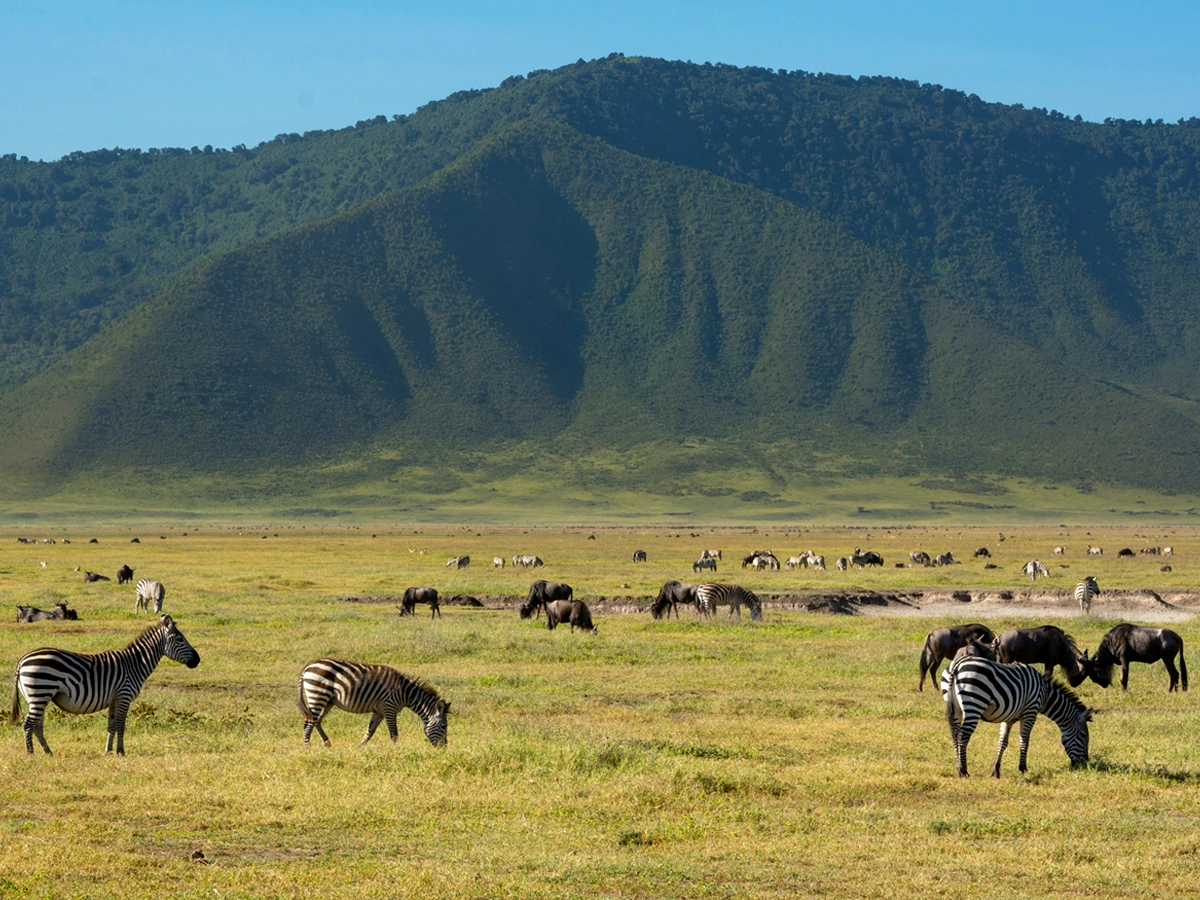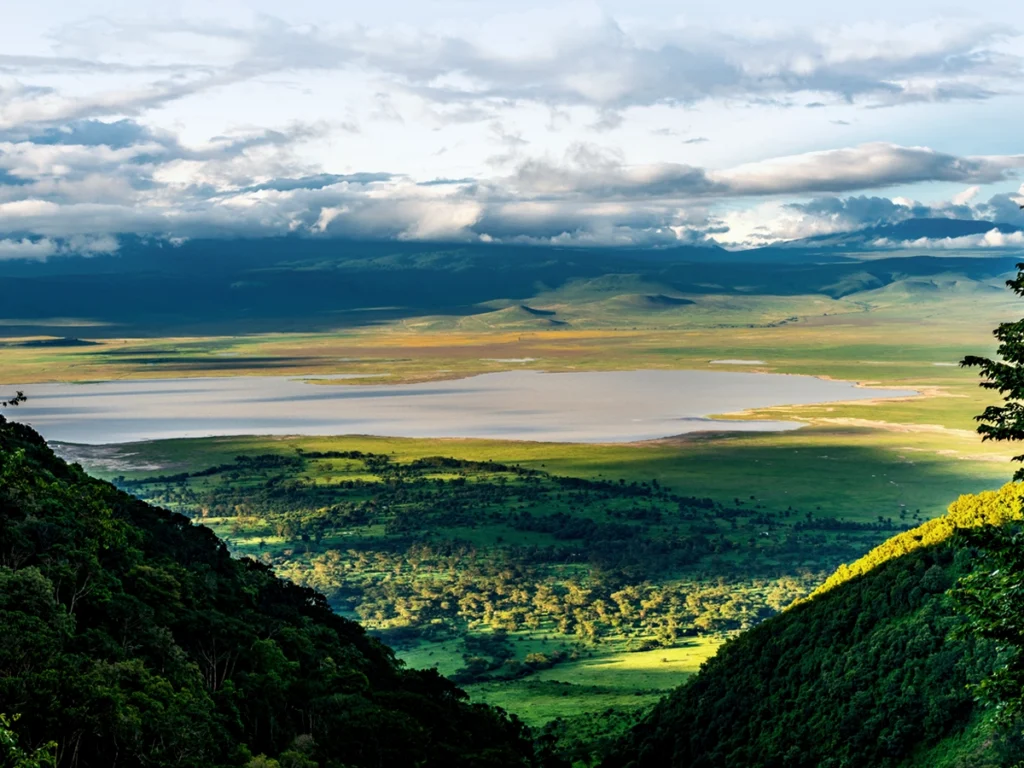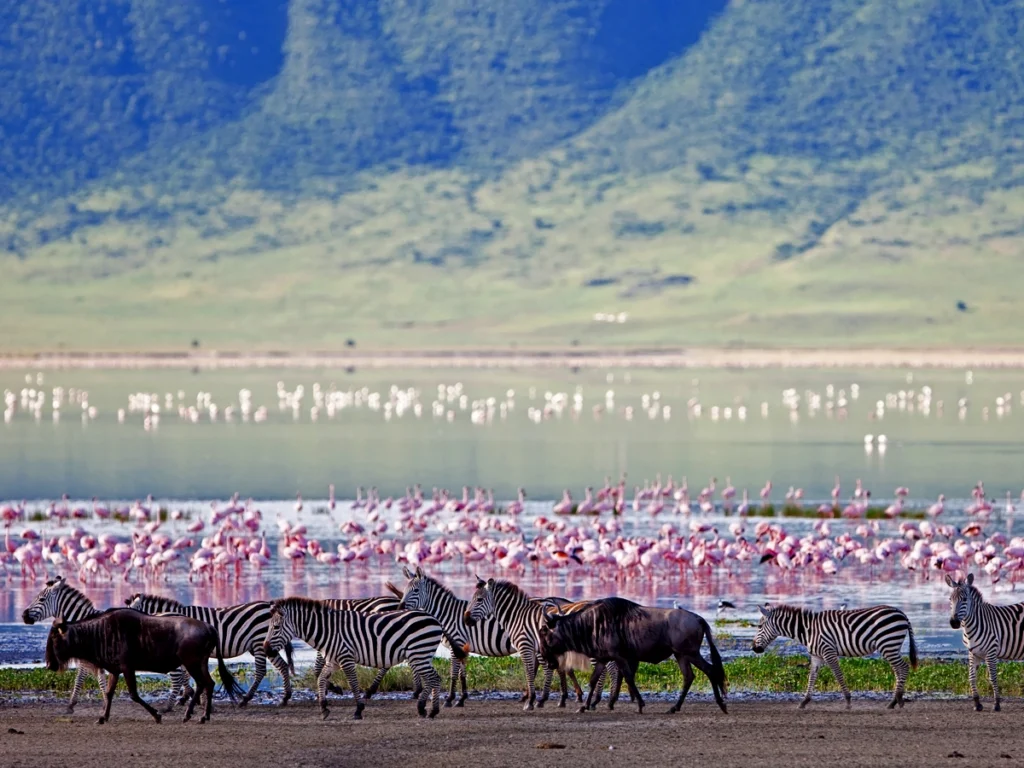
Tanzania’s Ngorongoro Crater, often called Africa’s “Garden of Eden,” is one of the most extraordinary safari destinations in the world. Formed by a massive volcanic eruption millions of years ago, this ancient caldera now provides a sanctuary for a rich diversity of wildlife. But what truly sets Ngorongoro apart isn’t just its beauty—it’s the unique way animals behave within its natural boundaries.
The crater’s enclosed nature, stable environment, and abundant resources have shaped the instincts, movement patterns, and interactions of its wildlife in ways that are distinct from those in the open plains of the Serengeti.
Let’s explore what makes Ngorongoro Crater a must-visit destination and how its history and geography have influenced the behavior of the animals that call it home.
Here are five fascinating facts about Serengeti elephants that will make your safari experience even more memorable.
Ngorongoro Crater is the largest intact volcanic caldera in the world, spanning about 20 kilometers in diameter and plunging over 600 meters (2,000 feet) deep. Millions of years ago, a towering volcano erupted and collapsed, forming a self-contained ecosystem where wildlife could flourish without the need for long migrations.
This unique geography creates ideal conditions for animals to thrive year-round, with permanent water sources, lush grasslands, and an abundance of prey. Because of this, animals in Ngorongoro don’t experience the same seasonal pressures as those in open ecosystems, leading to distinct behaviors and social structures.

Unlike in the Serengeti, where lion prides often spread out to cover large hunting territories, Ngorongoro’s lions live in unusually large prides due to the high density of prey. With food readily available, lionesses do not need to split into smaller groups to hunt, leading to prides with up to 20 or more members. This results in complex social interactions, including more frequent displays of bonding, cooperation, and even territorial conflicts between prides.
Additionally, since lions don’t have to roam vast distances to find prey, they conserve energy and often appear more relaxed and confident within their environment.
Ngorongoro is home to some of Africa’s oldest elephant bulls, many of which roam alone rather than in large family herds. Unlike elephants in other regions that migrate in search of food and water, the bulls here have the luxury of a stable and consistent habitat, allowing them to lead a more independent lifestyle.
These elephants are also known for their impressively long tusks, a sign of their age and good health, as they can remain in the crater for decades without facing the same environmental challenges as elephants in harsher landscapes.
Ngorongoro Crater is one of the last strongholds for the critically endangered black rhino. These majestic creatures have developed a routine lifestyle, feeding in open grasslands during the cool mornings and retreating to thicker bush areas as the day heats up.
Because there are fewer natural predators within the crater, black rhinos here appear calmer and more composed compared to their skittish counterparts in open areas. Their predictable movements provide excellent opportunities for sightings, making Ngorongoro one of the best places in Africa to see them.
Ngorongoro Crater is one of the last strongholds for the critically endangered black rhino. These majestic creatures have developed a routine lifestyle, feeding in open grasslands during the cool mornings and retreating to thicker bush areas as the day heats up.
Here, hyenas are more likely to steal kills from lions rather than the other way around, as their numbers give them an advantage in conflicts over food. Their laugh-like vocalizations, used for communication and intimidation, can often be heard echoing across the crater.
In most of Africa, herbivores like zebras and wildebeests must follow seasonal migrations to find fresh grazing lands. However, in Ngorongoro, the constant supply of water and lush grasses means that these animals stay within the crater year-round.
As a result, their behaviors become more predictable and stable, with grazers following familiar paths between feeding and watering areas every day. This also makes predator-prey interactions more frequent and visible, offering safari-goers exceptional game-viewing opportunities.

A game drive through Ngorongoro Crater is unlike any other safari in Africa. The sheer concentration of wildlife, combined with the dramatic backdrop of towering crater walls, creates a sense of being inside a natural amphitheatre, where every moment feels intimate and thrilling.
Ngorongoro is one of the few places in Africa where you can spot the Big 5 (lion, leopard, elephant, buffalo, and rhino) in a single day. The enclosed nature of the crater means that sightings of these iconic species are more frequent and up-close than in most other safari destinations.
The crater is not just a flat grassland—it features forests, lakes, swamps, and open plains, each supporting different types of wildlife. Lake Magadi, for example, attracts seasonal flocks of flamingos, turning the waters pink, while the Lerai Forest is a prime spot for elephants and leopards.
Because Ngorongoro has remained unchanged for thousands of years, a safari here feels like stepping back in time. The landscape, the wildlife interactions, and the way animals have adapted to this self-contained world make every visit a deeply immersive experience.
Ngorongoro Crater is a living testament to nature’s ability to thrive in a unique, enclosed world. From its ancient history to its one-of-a-kind animal behaviors, this UNESCO World Heritage Site offers something truly special for every wildlife enthusiast.
If you’re looking for a safari that delivers unforgettable wildlife encounters, breathtaking scenery, and the chance to witness how animals adapt to an extraordinary environment, then Ngorongoro Crater is a place you simply cannot miss.
For guests staying at One Nature, we offer a private Ngorongoro Crater visit as one of our activities. By booking this experience with us, you’ll have the opportunity to explore this remarkable natural wonder and witness its breathtaking beauty firsthand.